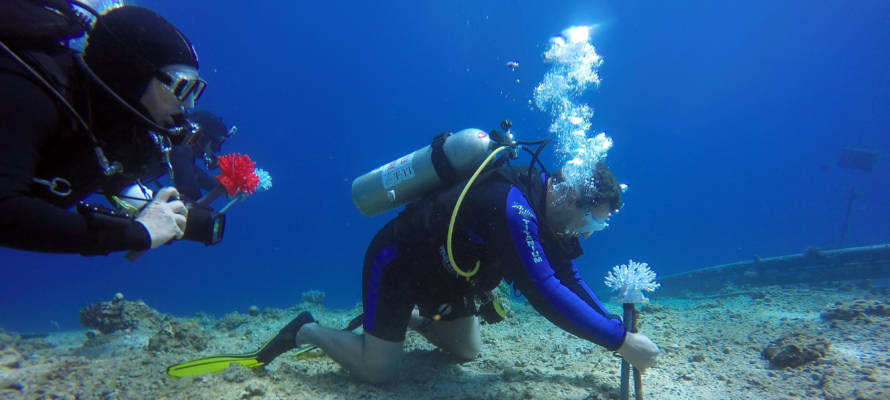An Israeli team is working to protect coral reefs from decay as a result of climate change, natural causes and human activity.
By TPS
Israel researchers at Ben-Gurion University (BGU) and the Technion Institute of Technology in Haifa have developed 3D printed corals that can help save the habitats of sea creatures worldwide. The development may prove crucial to combat the abuse and degradation of the world’s coral reefs.
Coral reefs worldwide are experiencing a continuous process of decay as a result of climate change, natural causes and human activity, particularly coral harvesting for aquariums.
The new 3D printed corals could replace degraded habitats in the future, where such measures are necessary. The researchers found that in some instances, the fish actually preferred the artificially manufactured corals to natural ones.
The research focused on finding ways to create artificial corals made of bioplastics. The 3D printed coral initiative is the first of its kind to focus on accurately reproducing corals that simulate the structure and functionality of natural living corals. These attributes include water flow around the coral structures, specific sizes that fit the diversity of fish species and proximity to food.
The study is part of a collaboration between the BGU team led by Professor Nadav Shashar of BGU’s Marine Biology and Biotechnology Program and the Design-Tech Lab headed by Professor Ezri Tarazi at the Technion.
“We were surprised to discover that color mattered. Humans don’t take into account the outside colors of a house when deciding to buy one, perhaps because they can repaint it,” said Shashar. “Fish, on the other hand, indicated that the color of their potential new home was a make-or-break factor. Fish species that can see colors showed a clear preference for colored shelters over dull ones,” he added.
In their next stage of the study, the researchers plan to design large reef units instead of single corals.
“We want to understand what makes some structures work better than others. Our approach highlights the potential of tackling environmental challenges through design. Using digital design tools and methods, we can help the global effort to find better future practices to protect and restore coral reefs that are rapidly being annihilated,” Shahar said.
Tarazi said that “nature-centered design” encapsulates their approach to the colossal challenge of habitat degradation.
Shahar noted to the interdisciplinary cooperation that took place in the research.
“No discipline alone can address these challenges. There is a clear need for cross-discipline collaboration. We proved that the incorporation of designers in addressing urgent biological issues is beneficial and can serve as a model for incorporating design thinking to address biological questions and sustaining nature,” he said.
